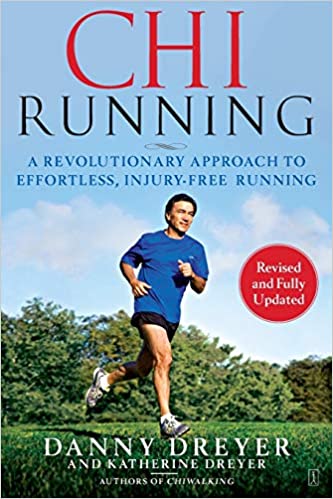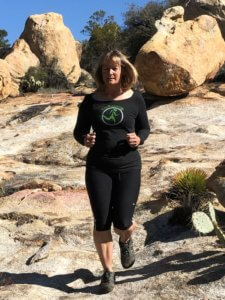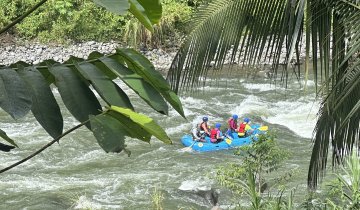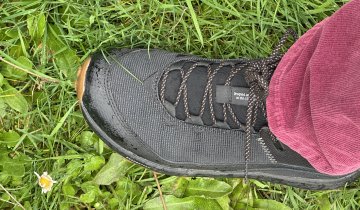It’s one thing to read a book on running mechanics and imagine your form is improving. It’s another to watch a video of yourself running in excruciating slow motion. “See how your foot stays in dorsiflexion,” says my running coach, Lisa Holloway, as we sit on a picnic bench overlooking a San Diego beach. Sure enough, my feet are never getting far enough off the ground to relax the ankles, one of the many principles of Chi Running. Add my arms flopping around and the lack of proper posture and you have an inefficient runner prone to shin splints and knee pain. But Lisa assured me all was fixable. I just had to start from the ground up, from feeling the tripod of my feet contacting the blacktop to a spinal lift like somebody was grabbing my ponytail and pulling up. If I just changed everything, I could learn this recipe for injury-free running.
What is Chi Running?
Chi running is a method founded by ultra-marathoner and longtime tai chi practitioner Danny Dreyer. It incorporates elements of tai chi into running for safer and more efficient form. Dreyer’s first book, ChiRunning: A Revolutionary Approach to Effortless, Injury-free Running, coauthored with his wife Katherine Dreyer, came out in 2004. One of the key principles is learning to align the spinal column while focusing the energy at the center and keeping the arms and legs free of tension. The whole body leans forward from the ankles just a little, and you try to move from the dantian, the body’s energy center, which is just below the navel and about an inch beneath the skin.

The Dreyers followed their first book up with ChiWalking: Five Mindful Steps to Lifelong Health and Energy in 2006 and ChiMarathon: The Breakthrough Natural Running Program for a Pain-Free Half Marathon and Marathon in 2012. They continued to race, speak about running, write for running publications, teach their methods and train coaches to further proliferate ChiRunning principles. The Dreyers retired in early 2021. Five of their master trainers took over the empire.
A Chi Running workshop—warming up
You couldn’t find a more enthusiastic ambassador for Chi Running than Lisa. When I show up, she says, “You must be Teresa.” Has she been stalking my Facebook? How did she recognize me, the first to arrive for our five-hour workshop? Turns out, I’m the only participant.
“Uh, do you want to make it a little shorter?” I ask her. I’ve taught yoga classes where only one person shows up, so I know just how unprofitable that is for a self-employed person. Plus, she lives about two hours away. But she assures me she was coming to San Diego anyway to pick up a race packet, and she’s so passionate about Chi Running that she’s happy to teach a single student. I went on to learn that she’s a retired fire captain who’s not coaching running for the money, but out of a kind of evangelism to make running enjoyable and prevent injuries.

There’s extra pressure when you’re the only student. Thank goodness I’d read, or at least skimmed, the whole Chi Running book.
I’d wondered how far we’d run in the workshop. Turns out, we stayed close to our home base of the picnic table. Lisa talked about the principles of Chi Running, then led me through a series of joint loosening exercises. These are the way chi runners warm up, rather than with static stretches. I’ve done many loosening exercises before, but these immediately struck me as better. For example, instead of standing on one leg and using muscle power to circle our ankles, we put one leg behind, top of the foot on the ground, and rolled the ankle more passively, keeping the ankle loose. This was an important exercise for me, the chronic dorsiflexer who needed to learn to relax the ankles while running.
Chi Running drills
Most of our workshop consisted of doing drills in the parking lot, within sight of our picnic table. One could feel a bit conspicuous doing running drills in a beach parking lot. But people do plenty of odd things at a southern California beach, and I was almost totally focused on Lisa, so I was able to pretty much ignore everyone else. Since it was January, spending time in a beach parking lot was less hazardous than it would have been in summer.
For each drill, we concentrated on just a few things at a time, such as rotating the pelvis correctly, leading with the dantian, keeping the shoulders facing forward, lifting the soles of the feet to the rear and/or swinging the elbows back. Lisa ran beside me, demonstrating an astonishing ability to watch me out of the corner of her eye. She was 100% encouraging and supportive, no matter my running faux pas.
Will I be a Chi runner?
Even though I haven’t been working as a personal trainer for the last few years, I’ve been keeping my certification, just in case. I signed up for Chi running because it fulfilled my continuing ed requirement with the American Council on Exercise.
After I took the workshop, I was a bit discouraged, despite Lisa’s optimism. It seemed like a hell of a lot of work to relearn my running. I felt more inclined to return to my default setting, which is reading novels while eating bon bons in the bathtub. But really, what did I have to lose? I run two or three times a week anyway, so I might as well try to run in a way that would prevent injuries. So far, my main focus is to stop my chronic dorsiflexion. I run slowly around my local park thinking relaxed ankles, relaxed ankles, relaxed ankles. My secondary foci have been keeping my arms in proper form, since my wrists want to relax like noodles along with the ankles, and posture, and leading with the dantian, and shoulders facing forwards. It’s a lot to remember, and at first it’s all pretty tiring. But spending the morning with Lisa gave me way more confidence and resolve than I had from the book alone. I tell myself that if I put faith in my running coach, anything is possible. Even relaxed ankles.



